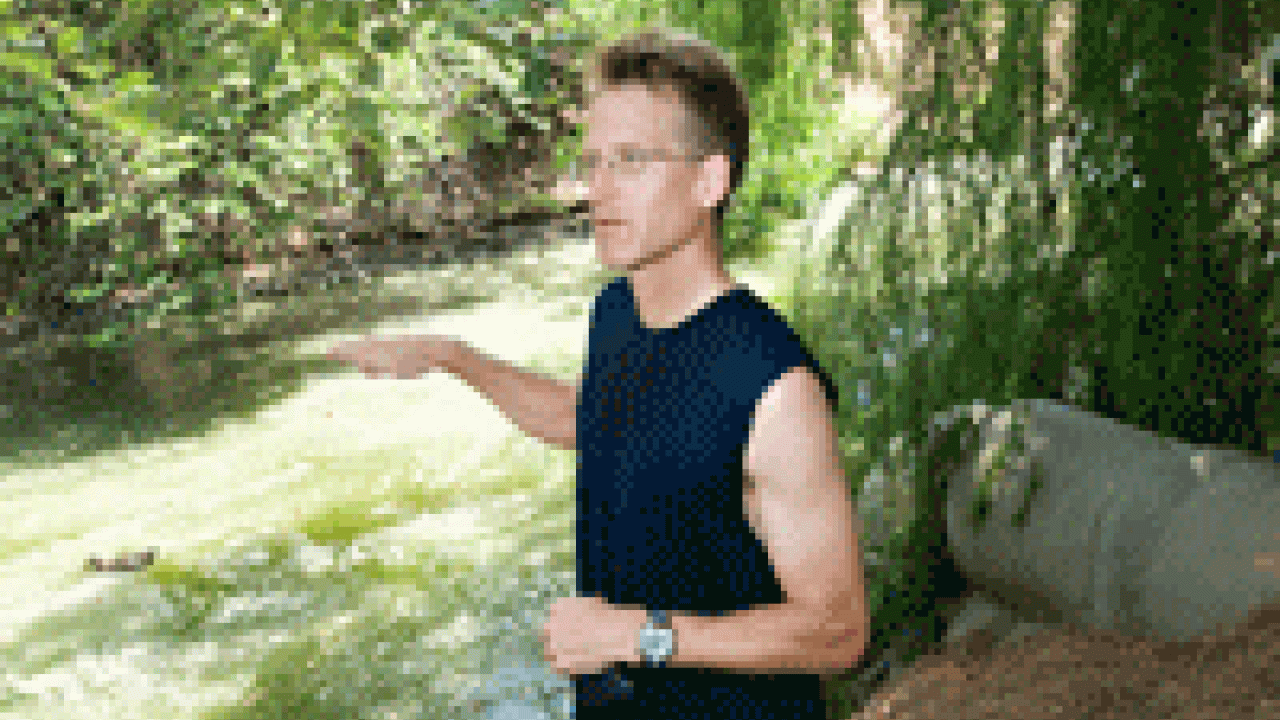An unexpectedly early algae bloom in the arboretum waterway prompted the university to shut off a new water supply that campus officials had seen as a way to make the channel fresh and clean.
The project, more than eight years in the making, still might work. It relies on reclaimed water from the campus's wastewater treatment plant — turning something disposable into something useful.
For now, though, campus officials are almost certain the new inflow triggered the algae bloom in the western third of the 1½-mile-long waterway.
"We're hoping to come up with a solution to get this back running," said David Phillips, interim director of Utility Services. He said he suspects nutrients in the reclaimed water fed the bloom, something that normally would not occur until the hottest part of summer.
'I'm not giving up'
Before the algae reared its foamy, bright green head the weekend of May 3-4, the arboretum staff had been planning a public celebration June 3 for the waterway improvement project. Arboretum Director Kathleen Socolofsky said the party had not been canceled — only postponed.
"I'm not giving up very easily," she said.
Phillips said utility workers shut off the flow of reclaimed water into the waterway on May 6. Then they fought the algae by adding fresh water and spraying an anti-foaming agent.
(Ironically, the fresh water — nonchlorinated, from the system of wells used to irrigate the campus — is too fresh for the arboretum. The water is too clear, inconsistent with the waterway's natural look, Phillips explained.)
The anti-foaming agent targeted the algae as it lay clumped together on the surface. By May 9, most of the algae had broken up and sank.
When it is all gone, and the waterway stabilized, Phillips said, he is ready to try again. And, like any good researcher at a university like UC Davis, he plans to try different variables.
For example, he said, crews will introduce fresh water along with reclaimed water. "We need to figure out the right balance," he said.
The reclaimed water may not work by itself because of its relatively high concentrations of nutrients — which algae feed on.
Mike Fan, wastewater treatment plant operator, said: "This is something we had in mind before we started the project, since the nutrients (phosphorus and nitrogen) in the effluent are much higher than what is normally found in the waterway."
Samples held concentrations of 6.3 parts per million, or ppm, of total phosphorous and 6.2 ppm of total nitrogen in the reclaimed wastewater, compared with 0.02 ppm of phosphorous and 1.9 ppm of nitrogen normally found in the waterway during its stagnant period in summer.
Phillips said a forthcoming expansion project at the wastewater treatment plant could allow the university to reduce the effluent's phosphorous content. Also, he said he will explore the possibility of starting an education campaign on campus to cut down the amount of phosphorous — typically found in soaps — that enters the sewer system.
Without such remediation, Phillips and others knew the existing phosphorus content might contribute to an algae bloom. It happens every year — "but we're all surprised to have this occur so early in the season with the project running."
By delivering up to 2 million gallons a day of reclaimed water, the project introduces a current in a "creek" that is not really a creek. It is dammed at both ends and has no natural inflow other than rainwater.
In Davis' dry summers, the waterway becomes stagnant — which lends to algae growth when the weather heats up. And when the algae flourish, it turns weird shades of green and puts off a smell that can overpower the arboretum's flowers.
But that does not usually happen until August.
This spring, with the algae already benefiting from the inflow of the nutrient-rich reclaimed water, the bloom exploded during a temperature warm-up in early May.
The project had been operating just fine — with no algae outburst — during a test phase that began late last year. The water is cleaned to federal and state standards and, by design, flows through South Putah Creek into the Sacramento River.
With the waterway improvement project in place, the reclaimed water simply takes a detour through the arboretum before emptying into Putah Creek.
The project showed "glimpses of success," Phillips said.
During an interview along the waterway on May 1, before the algae bloom, Phillips and Socolofsky talked about how the channel had started to clear up.
"We're getting good feedback," Socolofsky said. "People are seeing fish and turtles." In fact, as she stood on the path above the inlet pipe, she saw a carp big enough for a frying pan.
Socolofsky said fresh and clean is what the waterway should be as part of UC Davis' new "front door" at the south edge of campus. The arboretum is the centerpiece of the university's GATEways project — with GATE standing for Gardens, Arts and The Environment — forging new connections among the campus, city and region.
"We've got a good team of people who are very interested in helping clean up the waterway," she said.
To learn why the arboretum waterway is not a creek, and more about the waterway improvement project, click here.
Media Resources
Clifton B. Parker, Dateline, (530) 752-1932, cparker@ucdavis.edu
